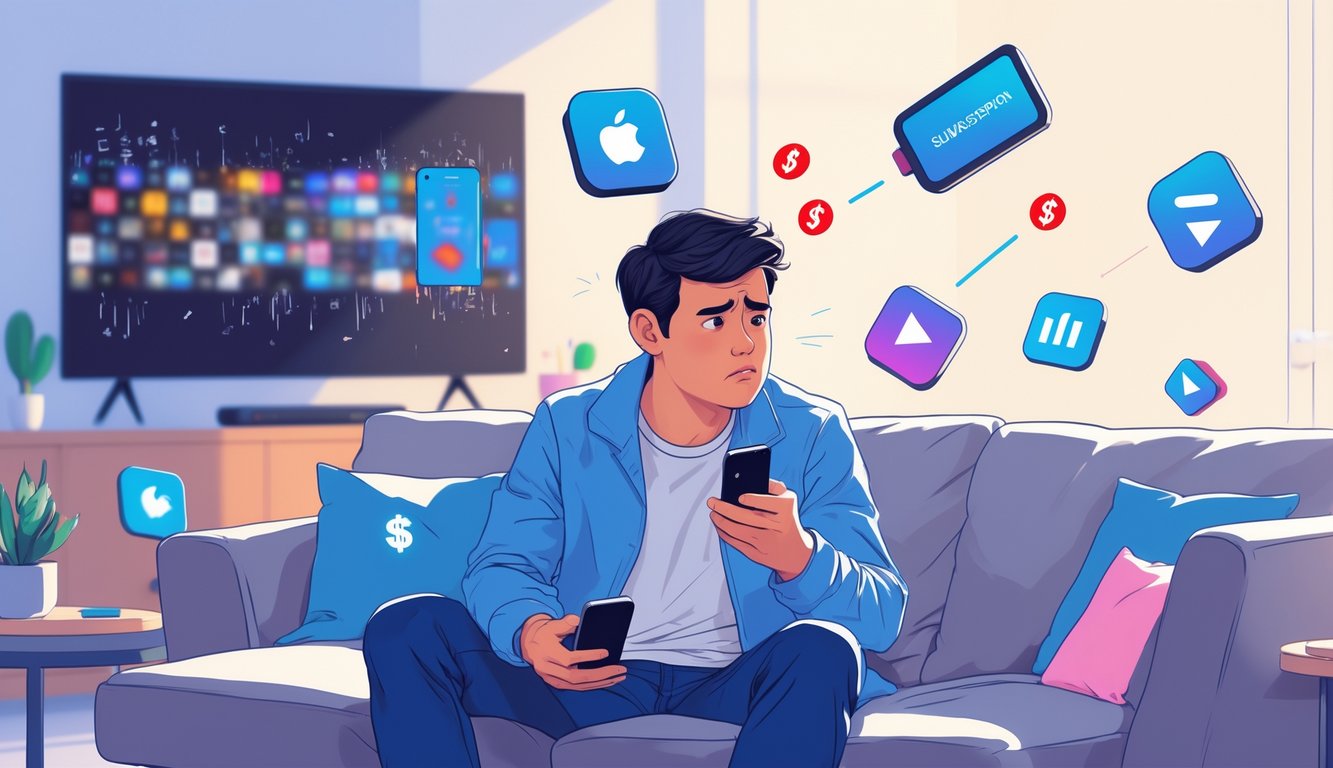
Hulu
Hulu’s just confusing. Every time I log in, there’s a new bundle offer—Hulu with ads, Hulu without, Hulu + Live TV, and then the Disney+ thing. Fine print everywhere. Base plan with ads is $8, but if you hate commercials, double it. Live TV? Don’t even bother unless you’ve got $80 a month burning a hole in your pocket. Forbes did a breakdown and yeah, Live TV is where your wallet goes to die.
They killed the student discount last winter. Never brought it back. Try to pause your sub and they spam your inbox. Still, I keep it for FX shows and The Handmaid’s Tale, but every few months, the price jumps and I think, “Didn’t I leave cable for less of this?”
Max, Peacock, and Paramount+
Max, Peacock, Paramount+—I can’t keep these straight without a spreadsheet. Max splits into ad-based, ad-free, and Ultimate ad-free. Only Ultimate lets you stream on multiple devices and get Dolby Vision, which I found out when my TV randomly downgraded House of the Dragon to blurry mode. Ultimate’s over $20, regular ad-free is $16.
Peacock’s obsessed with sports rights now, and if you want to avoid ads, you still get a few during big games. $8 gets you in the door, but it’s not ad-free. Paramount+ mashed Showtime into itself, but honestly, single sign-on glitches, shows disappear, and last time I recommended Mayor of Kingstown, it was suddenly “on pause.” Classic.
They keep shuffling bundles around, hoping I’ll just say yes to everything. None of the big combos—Spotify, Tubi, Prime Video, Apple TV+—actually cover everything. I paid for both Peacock and Paramount+ in the same month without realizing. Try explaining that to your accountant. Or your spouse.
Ad-Supported Tiers: Are They Really Saving You Money?
Half the time I’m torn between figuring out lunch and deciding if ad-supported streaming is actually a deal or just a patience test. Sure, $7 a month sounds better, but then you’re stuck watching the same insurance ad five times. Netflix’s “savings” (I saw a Movieguide stat, probably real?) is $120 a year, but is that worth the interruptions? Not sure.
The Growth of Ad-Supported Streaming
Last week I tried to map out which service still lets me escape ads without going broke. Turns out, in 2024, over half of new subs are ad-supported. Every service except Apple TV+ has an ad tier now. Hub Research says 60% of people will watch ads if it means a lower bill. My neighbor—he reads streaming contracts for fun, don’t ask—says people pick these tiers for the price and because originals aren’t always locked away.
But then, some plans sneak up the price, or just yank content with zero warning. My spreadsheet is already a disaster. I think I gave up halfway through.
Commercial Breaks and the Viewer Experience
I’ll be deep in Outer Range, then—bam—back-to-back mattress ads. I timed it last weekend (don’t judge, I was bored): almost 10% of my watch time was just commercials. TechCrunch said 51 minutes of ads in 500 minutes of content. Netflix’s $6.99 plan wasn’t as bad as Paramount+, but CBS show ads repeat so much it’s like déjà vu.
It’s not as bad as old-school TV, maybe, but it kills the mood in a drama. Sometimes I have to hit pause, un-mute, and wonder if I’m trapped in an ad loop. Some apps don’t warn you before a break, and skipping? Forget it unless you pay double. And if I see one more insurance ad, I might just buy a mattress out of spite.
Bundling and Combined Streaming Offers
Anyway, here’s what bugs me: I’m paying for a stack of services, but watching maybe five shows. Bundles look like a deal, but my spreadsheet just screams at me. Are these “savings” real, or just a shell game with extra steps?
Pros and Cons of Bundled Subscriptions
Every bundle looks good until you actually read the details. Paramount+ with Showtime, Hulu + Disney+, Amazon Prime with all its “perks”—it’s one payment, but suddenly I’m paying for ViacomCBS’s entire library because I got hooked on one show. Then I forget to cancel and get billed again.
Most people I know, including me, hit this “subscription fatigue” wall. Bundling feels like it should help (fewer logins, less clutter), but overlaps happen fast. I’ve paid double for stuff because I lost track of which bundle did what. Statista says only about half of viewers actually save money after stacking bundles. Nielsen says “bundle churn” is a thing—jump in for a show, bail out after, repeat. It’s not really cheaper unless you’re obsessive about tracking it.
The Impact on Discretionary Spending
My food budget’s fine, but streaming? That’s where my money leaks out. Every bundle tempts me with “just one more service,” and suddenly my monthly extras are out of control. Price hikes sneak in—$2 here, $3 there—and before you know it, you’re losing $60 a quarter like my friend Kate, who only noticed after her bank texted her.
Media companies know exactly what they’re doing. They slice up content, dangle bundles, and count on us not noticing. Consumer sites say to audit your subs, set calendar alerts, and cancel aggressively, but who really does that? If you don’t, those little charges add up—like microtransactions you only notice when it’s too late.



